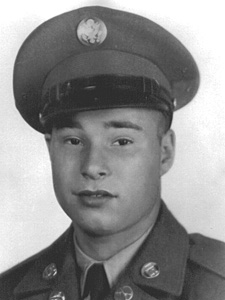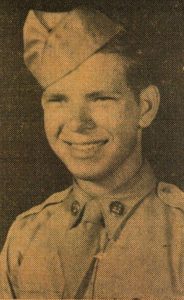Mathis, Grayson Lee
Army Private

Grayson Lee Mathis, age 19, from Maryland, Montgomery county.
Service era: Korea
Date of death: Sunday, December 3, 1950
Death details: On the evening of November 27, 1950, Chinese Communist Forces (CCF) launched a massive attack against the U.S. and United Nations (UN) troops stationed in the Chosin Reservoir area in north-east North Korea. The resulting seventeen-day conflict became known as the Battle of Chosin Reservoir. At the time of the initial CCF attack, members of the U.S. Army’s 31st and 32nd Infantry Regiments were defending the area north of Sinhung-ni, on the east side of the reservoir. The defenders were overwhelmed by the numerically superior CCF, and on December 1 were forced to withdraw to friendly lines at Hagaru-ri. Many men were lost or captured during the withdraw, with survivors reaching friendly lines in Hagaru-ri on December 2 and 3. Once at Hagaru-ri, the survivors of the withdrawal manned a section of the perimeter near East Hill, a strong defensive position overlooking the town. On the night of December 3, the Chinese attacked the Hagaru-ri perimeter and overwhelmed the defenders there. Many Americans were killed or went missing during these actions. Sergeant Grayson Lee Mathis, who joined the U.S. Army from Maryland, served with I Company, 3rd Battalion, 31st Infantry Regiment, 7th Infantry Division. His unit was part of the 31st Regimental Combat Team (RCT), which arrived at the Chosin Reservoir in late November, 1950. Sergeant Mathis was reported missing in action on December 3, near Hagaru-ri, when the CCF attacked the defensive perimeter the 31st had established on the east side of the town. The details surrounding his disappearance are unknown; he was seen to fall in battle, and he was not reported to be a prisoner of war. When the 31st RCT withdrew to the port of Hamhung for evacuation, they were unable to take the bodies of the fallen with them. Sgt. Mathis’s remains were not identified among those returned to U.S. custody after the war. Today, Sergeant Mathis is memorialized on the Courts of the Missing at the National Memorial Cemetery of the Pacific.
Source: National Archives, Defense POW/MIA Accounting Agency

